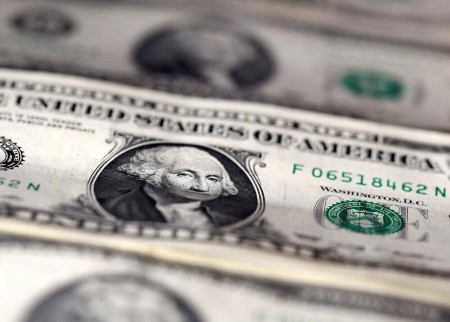




Philippines Trade Update: Exports momentum continues
 DOWNLOAD
DOWNLOAD

Quarterly Economic Growth Release: More BSP cuts to come
 DOWNLOAD
DOWNLOAD

Monthly Economic Update: Fed catches up
 DOWNLOAD
DOWNLOAD


RPT-COLUMN-Hedge fund bearishness on U.S. Treasuries nears extreme levels: McGeever

Repeats for U.S. readership, no change to text.
By Jamie McGeever
ORLANDO, Fla., Sept 5 (Reuters) – Hedge funds continue to up their bets on higher U.S. bond yields but there are signs that the size of this collective wager and the pace at which it has been built are reaching extreme levels.
What has been a highly lucrative trade this year could be about to run out of steam.
The Commodity Futures Trading Commission report for the week to Aug. 30 is the first snapshot of speculators’ positioning after Fed Chair Jerome Powell’s affirmation in Jackson Hole of policymakers’ commitment to do whatever it takes to get inflation back down towards target.
The latest CFTC report shows funds increased bearish bets on Treasuries across the curve.
They increased net short position in two-year futures to 281,600 contracts from 241,143 contracts, the biggest bearish bet on two-year bonds since April last year.
A closer look at the data shows the historic significance of the recent move. Funds have added to that short position for six consecutive weeks, the most bearish streak in four years, and the increase of almost 200,000 contracts in August was the second biggest bearish monthly swing on record.
A short position is essentially a wager that an asset’s price will fall, and a long position is a bet it will rise. In bonds and rates, yields fall when prices rise, and move up when prices fall.
BOND BEAR MARKET
Funds’ are now net short five-year Treasuries futures to the tune of 565,456 contracts, the largest net short since November 2018. Back then, funds were undertaking a powerful short-covering rally and the Fed was about to bring its rate-hiking campaign and quantitative tightening program to an end.
Similarly, this marks the sixth straight week of funds adding to short position – the most bearish streak in four years – and the monthly increase of 250,000 contracts was the third most bearish shift since these contracts were launched in the late 1980s.
Funds expanded their net short position in the 10-year space to 440,103 contracts, the largest since April.
Yields rose across the curve, with the two-year yield scaling 3.50% for the first time since 2007.
But there are three reasons to believe a turnaround could be imminent: the pace with which funds have amassed these short positions is unsustainable; bonds are becoming attractively cheap; and economic data suggest inflationary pressures are easing.
The Bloomberg U.S. Aggregate Bond Index .BCUSA is down 12.5% from its highs, more than double any previous peak-to-trough decline going back to the 1970s. Global bonds are down 20% from their peak for the first time ever. nL1N3090S0
Analysts at Goldman Sachs reckon the latest U.S. jobs data will signal a pause to the “upward repricing” of U.S. interest rates, and Morgan Stanley says the recent low in Treasuries will be a turning point “in view of the Fed’s aggressive action that has yet to fully play out in the real economy.”
(By Jamie McGeever; Editing by Sam Holmes)
((jamie.mcgeever@thomsonreuters.com; +1 (407) 288-5607; Reuters Messaging: jamie.mcgeever.reuters.com@reuters.net))
This article originally appeared on reuters.com





 By Reuters
By Reuters